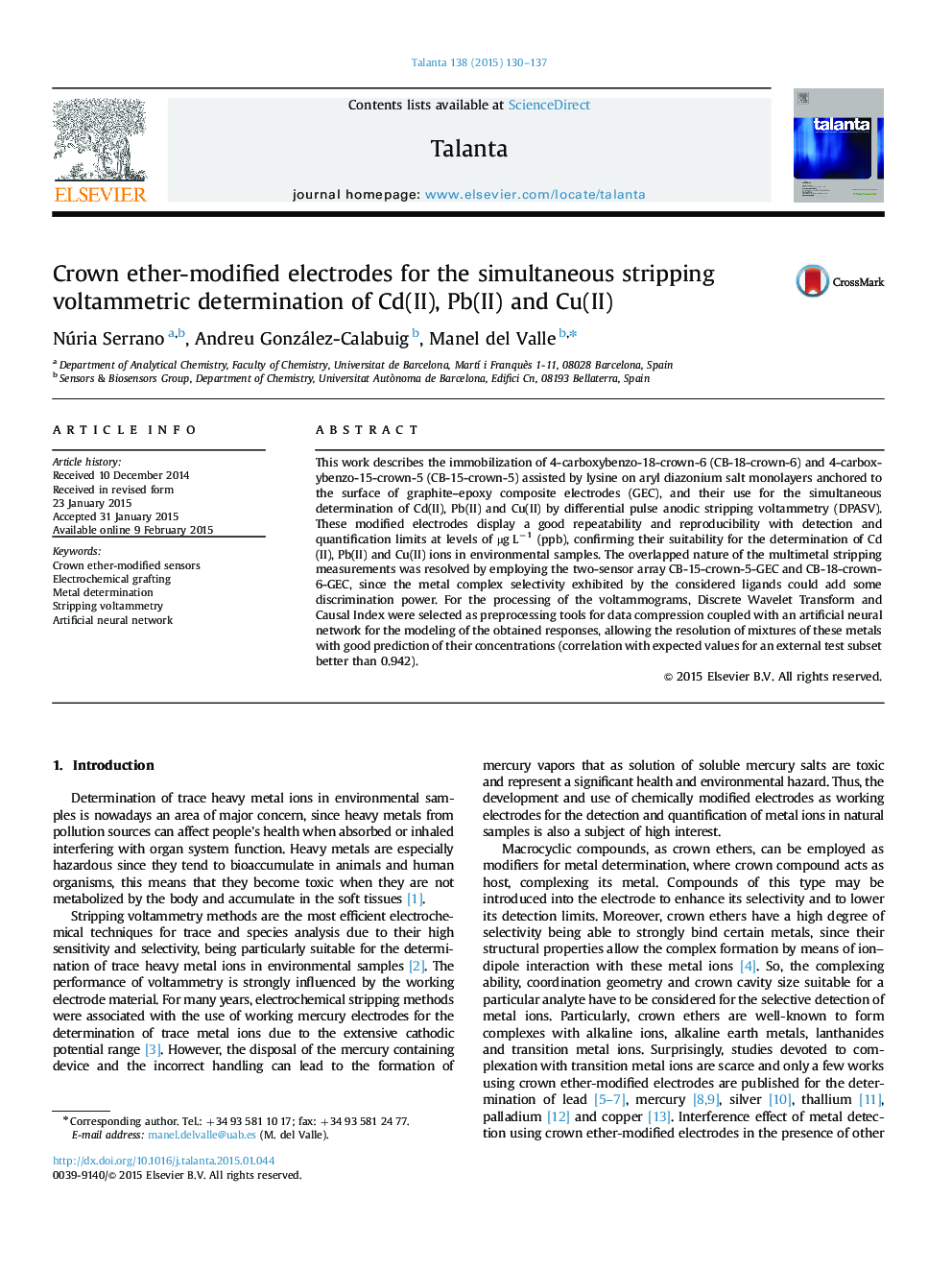| Article ID | Journal | Published Year | Pages | File Type |
|---|---|---|---|---|
| 1243340 | Talanta | 2015 | 8 Pages |
•Electrodes modified with crown ethers via aryl diazonium electrochemical grafting.•Cd(II), Pb(II) and Cu(II) determined at ppb level by an array of modified sensors.•Generation of distinct signatures with each crown ether and metal ions.•Voltammograms are first preprocessed using Wavelet Transform+Casual Index pruning.•Final determination by the use of artificial neural network model.
This work describes the immobilization of 4-carboxybenzo-18-crown-6 (CB-18-crown-6) and 4-carboxybenzo-15-crown-5 (CB-15-crown-5) assisted by lysine on aryl diazonium salt monolayers anchored to the surface of graphite–epoxy composite electrodes (GEC), and their use for the simultaneous determination of Cd(II), Pb(II) and Cu(II) by differential pulse anodic stripping voltammetry (DPASV). These modified electrodes display a good repeatability and reproducibility with detection and quantification limits at levels of µg L−1 (ppb), confirming their suitability for the determination of Cd(II), Pb(II) and Cu(II) ions in environmental samples. The overlapped nature of the multimetal stripping measurements was resolved by employing the two-sensor array CB-15-crown-5-GEC and CB-18-crown-6-GEC, since the metal complex selectivity exhibited by the considered ligands could add some discrimination power. For the processing of the voltammograms, Discrete Wavelet Transform and Causal Index were selected as preprocessing tools for data compression coupled with an artificial neural network for the modeling of the obtained responses, allowing the resolution of mixtures of these metals with good prediction of their concentrations (correlation with expected values for an external test subset better than 0.942).
Graphical abstractFigure optionsDownload full-size imageDownload as PowerPoint slide
